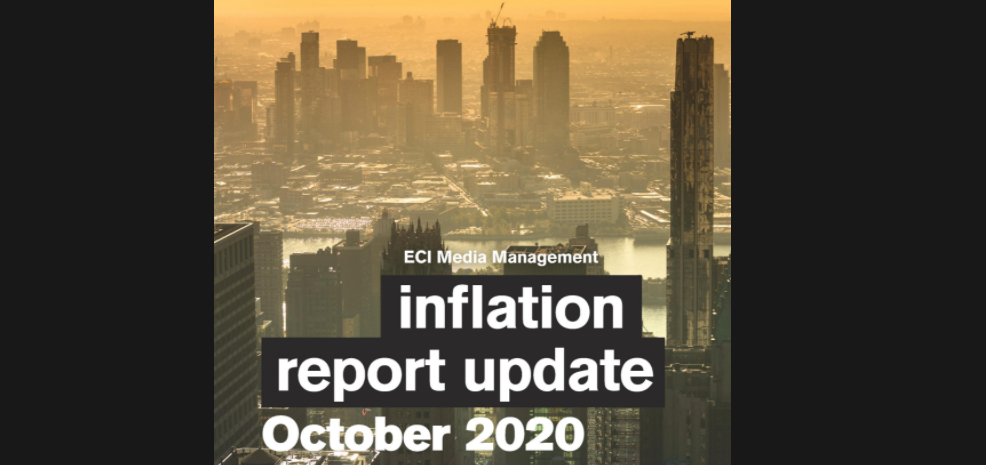The coronavirus pandemic continues to inflict pain on media pricing across the world. While media deflation has eased since Q2, prices are forecast to remain deflationary at -0.9% globally, driven by a downturn in traditional media, according to new data.
ECI Media Management has today released its Media Inflation Report Update for Q3 2020, also forecasts that media prices will remain deflationary across all continents, except APAC, where they are expected to experience mild inflation at 4.1%.
The report reveals some pockets of resilience, namely Digital Display and Digital Video, forecast as inflationary globally, at 2.6% and 4.1% respectively. The pandemic has accelerated the shift to digital media, as has the explosion of streaming platforms, both new and established, indicative of the demand for online video platforms, with premium inventory helping to boost inflation.
The UK is one of the markets hardest hit by pandemic, with all media anticipated to be deflationary except Digital Video, which is slightly inflationary. Mature markets such as the UK have seen a large reduction in advertising investment, with increased time and eyeballs reducing the overall price of TV and radio. That said, current inflation estimates do show a stronger market than was anticipated in April. With some restrictions still in place for the population, most media are still deflationary, although much less so than Q2 forecasts in the midst of the national lockdown.
ECI Media Management’s Global CEO, Fredrik Kinge, said: “2020 has been a turbulent year for the advertising industry and for the entire world. We would expect Q3 figures to be more positive than Q2 particularly as lockdowns ease, businesses reopen and consumer confidence grows, but with winter approaching in the northern hemisphere, and second waves of the pandemic emerging across the world, it remains to be seen if this recovery can be sustained.”
Kinge continues, “Although not forecast specifically in this report, we have seen that social and programmatically bought media have followed the same trajectory as Digital Display and Digital Video, bucking the deflationary trend of traditional media types. This resilience is no doubt in part down to their position at the bottom end of the funnel, driving sales – always the focus in a crisis rather than branding. They are also among the most flexible media types – investment can be cancelled at a moment’s notice so they are lower risk in unstable times. Of course, all media, including social and programmatic, have experienced dips in 2020, but as economies started to open up again and consumer confidence has grown, investment has started to flow again. Furthermore, many advertisers are slowing investment into OOH and radio, freeing up ad dollars for the digital platforms where consumers are spending more time.
In a context of decreasing media prices, ECI Media Management empowers its clients by providing forensic analysis of their activity, and actionable insights so they can successfully navigate the complex digital market and maximise TV effectiveness, with the ultimate goal of driving higher media value.”
ECI Media Management’s Annual Media Inflation Report forecasts media inflation for seven key media channels every January; TV, Digital Display, Digital Video, Newspapers, Magazines, OOH and Radio, at a global and regional level and across 61 countries. An update to these forecasts is published in Q3. ECI Media Management has been tracking media inflation since 2012, providing unrivalled understanding of trends over time. Its experts draw data for the report from the company’s global network of offices, media agencies, and real client data. The data is cross-referenced with industry bodies and publications, as well as with agency traders and media vendors, which means that it reflects the expertise of those with an impact on trading variables.
View the full report here
